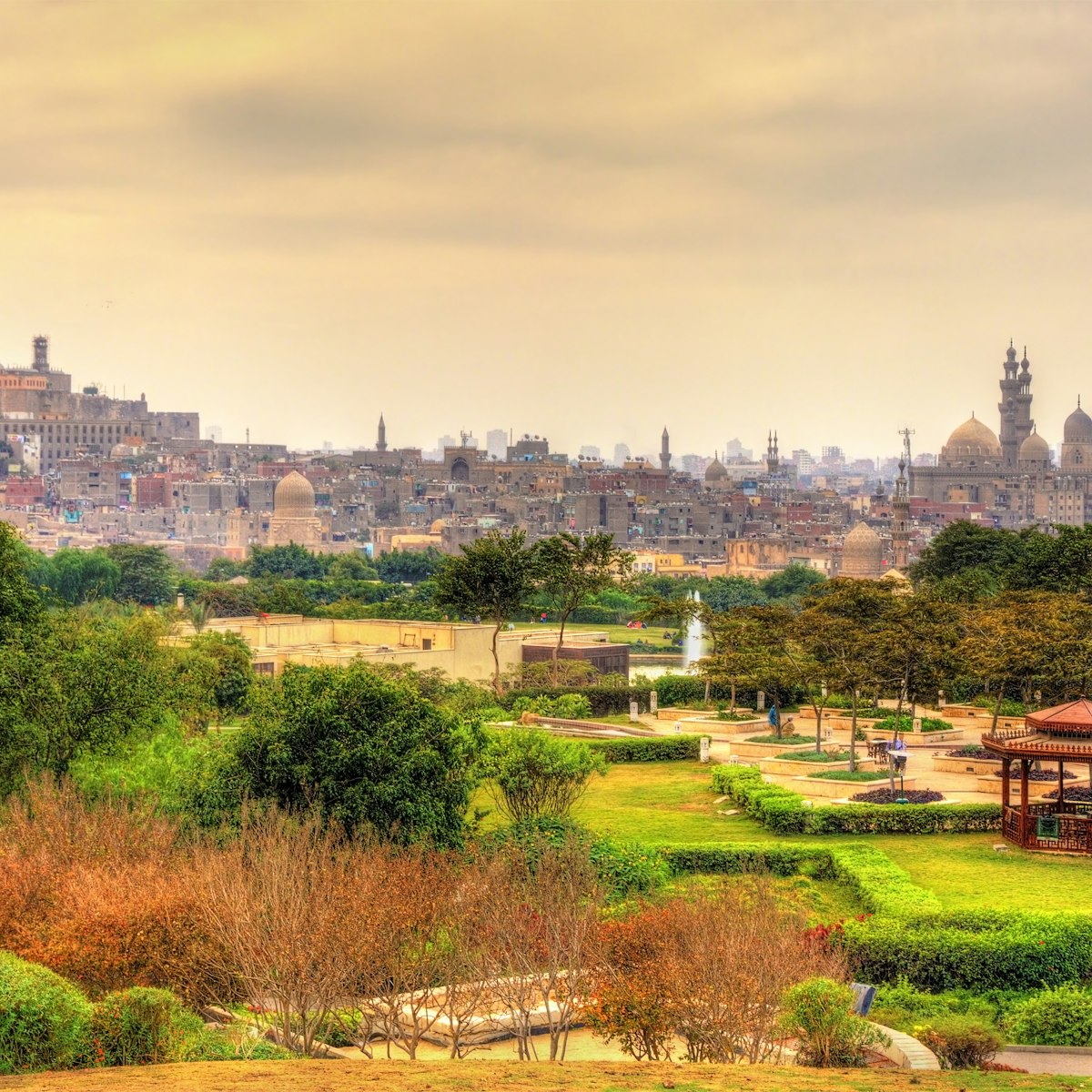Massive yet elegant, this grand structure is regarded as the finest piece of early Mamluk architecture in Cairo. It was built between 1356 and 1363 by Sultan Hassan, a grandson of Sultan Qalaun; he took the throne at the age of 13, was deposed and reinstated no less than three times, then assassinated shortly before the mosque was completed. Beyond the striking recessed entrance, a dark passage leads into a peaceful square courtyard surrounded by four soaring iwans (vaulted halls).
The iwans were dedicated to teaching the four main schools of Sunni Islam. At the rear of the eastern iwan, an especially beautiful mihrab (niche in mosque indicating direction of Mecca) is flanked by stolen Crusader columns. To the right, a bronze door leads to the sultan’s mausoleum. During construction one of the minarets collapsed and killed some 300 onlookers sparking superstitious rumours that Sultan Hassan's rule was at an end. They weren't wrong. Just over a month later, he was murdered by his army commander.








